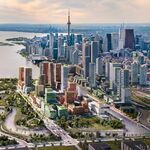M II A II R II K
Senior Member
Are pedestrian malls the future or the relic of antiquated thinking?
May 3rd, 2010
Yonah Freemark

Read More: http://americancity.org/columns/entry/2272/
###############################################
Even as New York City makes big news for transforming parts of 34th Street into a pedestrian mall, Sacramento is pulling back from the concept. Four decades after first closing a section of downtown’s K Street to automobile traffic, the leaders of California’s capital have had enough. They want the cars back to bring new vitality to the city’s streets to save businesses threatened by extinction due to a lack of traffic. In the post-war period, many medium-sized American cities seemed to be doing it — by forcing cars off the downtown business corridors, the assumption was that retail traffic would thrive just as it was in the big new shopping malls being built in every region. Influenced by the example of Kalamazoo, Michigan, which pedestrianized Burdick Street in 1959, more than 200 other cities hoped that this approach would bring new vitality to their dying centers by beautifying the street and encouraging consumption-oriented strolling.
Unfortunately, the suburban malls mostly won the contest; in cities across America, pedestrian malls or not, downtowns were mostly dead by the 1990s. The lack of noise, pollution, and danger associated with fewer cars was replaced by something that induced a lot more fear: A lack of people. Potential crime was far more detrimental to business growth than the possibility of being run over in a car. Sacramento has experienced a slow decline in its downtown since the introduction of the transit mall, though it’s unclear whether that loss of business was a result of the loss of cars from K Street or just the inevitable consequence of the lack of interest in shopping downtown experienced by cities nationwide. The addition of light rail service to K Street in 1987 didn’t improve the situation appreciably as it replaced what had been an entirely pedestrian boulevard with a light rail right-of-way.
And so the obvious course was to reverse direction. Kalamazoo moved to reintroduce cars to its downtown in 2000. Cities like Raleigh, North Carolina followed its example several years later. Even Sacramento conducted an experiment a few years ago to reopen a couple blocks of the mall and instantly saw more retail traffic. So the city will now spend $2.7 million to bring cars back in by late next year. Cars will be allowed to travel along one lane in each direction at a maximum of 15 mph with no parking. It is hoped that this influx of vehicles will bring more eyes to the street and thus improve the downtown’s business environment.
###############################################
Sacramento’s K Street Transit Mall Credit: El Cobrador

May 3rd, 2010
Yonah Freemark

Read More: http://americancity.org/columns/entry/2272/
###############################################
Even as New York City makes big news for transforming parts of 34th Street into a pedestrian mall, Sacramento is pulling back from the concept. Four decades after first closing a section of downtown’s K Street to automobile traffic, the leaders of California’s capital have had enough. They want the cars back to bring new vitality to the city’s streets to save businesses threatened by extinction due to a lack of traffic. In the post-war period, many medium-sized American cities seemed to be doing it — by forcing cars off the downtown business corridors, the assumption was that retail traffic would thrive just as it was in the big new shopping malls being built in every region. Influenced by the example of Kalamazoo, Michigan, which pedestrianized Burdick Street in 1959, more than 200 other cities hoped that this approach would bring new vitality to their dying centers by beautifying the street and encouraging consumption-oriented strolling.
Unfortunately, the suburban malls mostly won the contest; in cities across America, pedestrian malls or not, downtowns were mostly dead by the 1990s. The lack of noise, pollution, and danger associated with fewer cars was replaced by something that induced a lot more fear: A lack of people. Potential crime was far more detrimental to business growth than the possibility of being run over in a car. Sacramento has experienced a slow decline in its downtown since the introduction of the transit mall, though it’s unclear whether that loss of business was a result of the loss of cars from K Street or just the inevitable consequence of the lack of interest in shopping downtown experienced by cities nationwide. The addition of light rail service to K Street in 1987 didn’t improve the situation appreciably as it replaced what had been an entirely pedestrian boulevard with a light rail right-of-way.
And so the obvious course was to reverse direction. Kalamazoo moved to reintroduce cars to its downtown in 2000. Cities like Raleigh, North Carolina followed its example several years later. Even Sacramento conducted an experiment a few years ago to reopen a couple blocks of the mall and instantly saw more retail traffic. So the city will now spend $2.7 million to bring cars back in by late next year. Cars will be allowed to travel along one lane in each direction at a maximum of 15 mph with no parking. It is hoped that this influx of vehicles will bring more eyes to the street and thus improve the downtown’s business environment.
###############################################
Sacramento’s K Street Transit Mall Credit: El Cobrador





